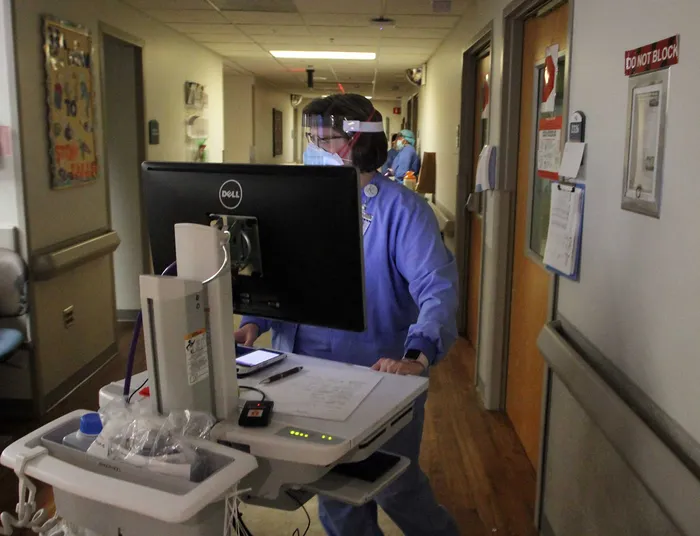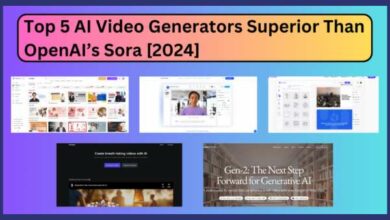In the last decade, distance and e-learning have gained popularity in classroom teaching. Virtual meeting platforms help educators and learners cross the barriers of distance and time. A student sitting in the Philippines can sign up for a diploma in the US and finish his education without even travelling anywhere.
Unlike other streams of education, medicine and nursing are healthcare studies that are critical as they are concerned with the patient’s lives. Here there is no room and scope for mistakes. Hands moving away from the traditional models of teaching medicine and nursing have proved to be challenging for educators, students, and the boards governing their licences.
Nevertheless, there is a change in the perception of educators and academic institutions as more and more students are looking to learn nursing online.
You can even get a BSN online now, which wasn’t possible before.
Effective ideas to teach nursing students online
Traditionally the nursing education pedagogy concentrated on disseminating clinical knowledge to the students through lectures and assignments. However, nursing just like any other form of adult education, will benefit more from adult learning methods. So care should be taken by the online nursing course developers to make the learning techniques that are interactive, engaging, relevant, and problem-centric.
Understanding the learning needs of students in an online format, will aid the educators to formulate methods. These methods will meet the requirements of the learner’s needs and the expected outcomes of the lesson.
Chatbots can be used for interactive conversations on various topics, helping students learn and remember important points related to clinical knowledge. These chatbots are AI tools that will act as make-believe characters resembling trainers. These chatbots discuss a topic and then check the understanding of the student on a real-time basis.
Virtual meeting room platforms can be used by the educator to impart the classes, either on a one-to-one basis or boot camp classes with multiple students resembling their lecture halls. The features of the virtual enable educators to share the screens and use a whiteboard to further explain and delve into subject-related topics.
A nursing educator or instructor can test the understanding of their students by giving them assignments regularly. These assignments will be similar to the traditional forms of learning, albeit these will be submitted online, preferably through an app that is accessible via a smartphone. The flexibility of submitting assignments from anywhere will attract more students to take up nursing from remote corners that lack in good schools. Instructors can review and discuss the feedback in virtual classes.
Instructors can initiate study groups for students that can help ease each other’s doubts and clarify them through social media interactions. This way senior or experienced students can help freshers in clarifying their questions and even practice the concepts in the long run. Reiterations from such interactions help the involved students remember their learnings for a long time in the future.
Barriers to online nursing teaching methods
The scope and engagement of artificial intelligence are only at the natal stage. So any project will have some teething problems that need to be solved before a complete roll-out of these programs. Nonetheless, the developers of these new-age learning programs and the health information technology companies will be able to locate the problem only when the end-users are testing their use and locating the bugs. So just like any new software testing phase, an online nursing program should be first introduced to a batch of nursing learners, who can identify the problems and report them in a shared drive.
Developing an online nursing program that can understand the learning needs and still be developed in sync with the standards set out by the regulatory boards of nursing education of various states, is a highly capital-intensive project. The framework of such a project should be carried out diligently to highlight the following points:-
- Meet the standards of accreditation set by the NCLEX and other state boards for nursing education.
- Training methods that are interactive and accessible for all the students and educators equally.
- User-friendly applications to give good teaching and learning experience
- Possibility to incorporate any updates and changes in the coursework
Perception and acceptance of instructors and students are barriers that exist in online education that are not alien to nursing education. The only way to overcome the perception of the larger community of teachers and students is by spreading awareness. A change is better accepted than forced to make it purposeful. By creating the right awareness amongst the end-users and enablers of online nursing education, the pre-existing notions that did not accept online nursing education can be overcome.
Productive learning outcomes
Education should enable people to understand the reason and purpose behind their lessons. If a student has to apply a certain formula to solve a problem, then he should understand why only that formula is applied and even be able to deduce the formula. The student needs to understand the practical applications of this formula in real-world scenarios.
The expectations of nursing education should be no different. Nurses should understand why they need to help any patient sit or lie in a certain position when handling them in a clinical setting. This purpose-oriented learning outcome will help a student achieve productive learning outcomes. Also, these learning takeaways are not forgotten in haste and help a nurse deliver safe standards of patient care.
Simulation models are designed for online nursing education to help nursing students understand a vast variety of concepts from the ease of their smartphones or laptop. This feature makes online nursing courses productive, accessible, and a fun way to learn.
As the future of education is dependent on artificial intelligence, robotics, and machine learning, nursing courses will not be far behind in accepting and moving on with this transformation. Care has to be taken to develop online courses that can impart quality education that is affordable, accessible, and easy to use by the future nurses who have to come prepared to fill the severe shortages that exist in the healthcare industry workforce.

 PM Vishwakarma Yojana 2024: How to Apply Online; STEP-BY-STEP Guide
PM Vishwakarma Yojana 2024: How to Apply Online; STEP-BY-STEP Guide Pradhan Mantri Surya Ghar Yojana 2024: Scheme Details, Eligibility, Subsidy and How To Apply Online?
Pradhan Mantri Surya Ghar Yojana 2024: Scheme Details, Eligibility, Subsidy and How To Apply Online? Advancing Indigenous Healthcare: Exploring the Role of Clinical Governance
Advancing Indigenous Healthcare: Exploring the Role of Clinical Governance Top 5 AI Video Generators Superior Than OpenAI’s Sora [2024]
Top 5 AI Video Generators Superior Than OpenAI’s Sora [2024] Exploring the World of Live Dealer Games: A Beginner’s Guide
Exploring the World of Live Dealer Games: A Beginner’s Guide New and Improved: Betinexchange Renamed Funinexchange for Better Gaming Fun
New and Improved: Betinexchange Renamed Funinexchange for Better Gaming Fun Common Mistakes to Avoid While Taking a Loan Online
Common Mistakes to Avoid While Taking a Loan Online Legendary Hooves: Top 5 Unforgettable Horses in Preakness History
Legendary Hooves: Top 5 Unforgettable Horses in Preakness History